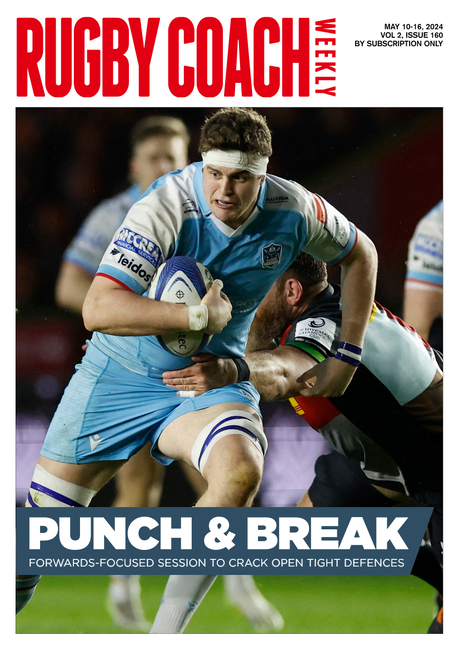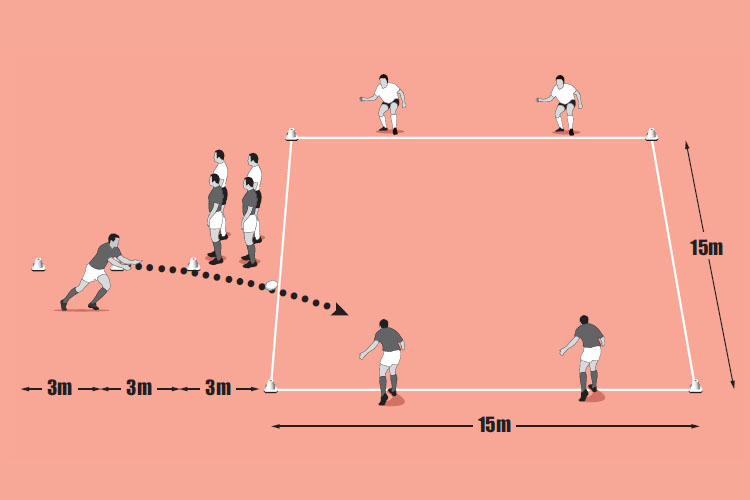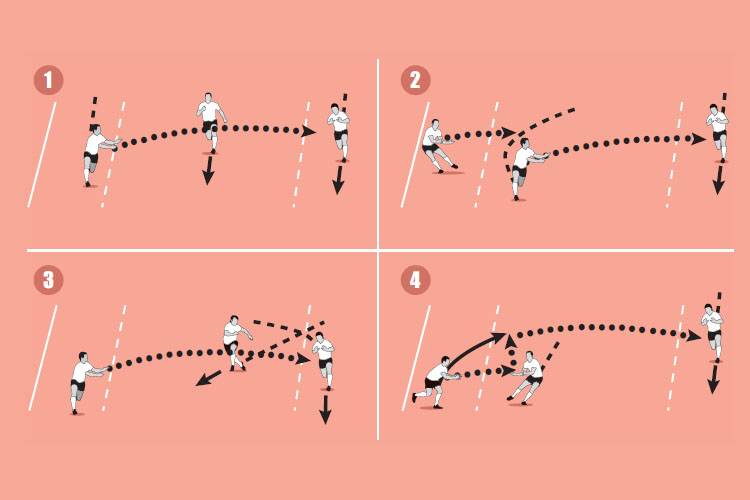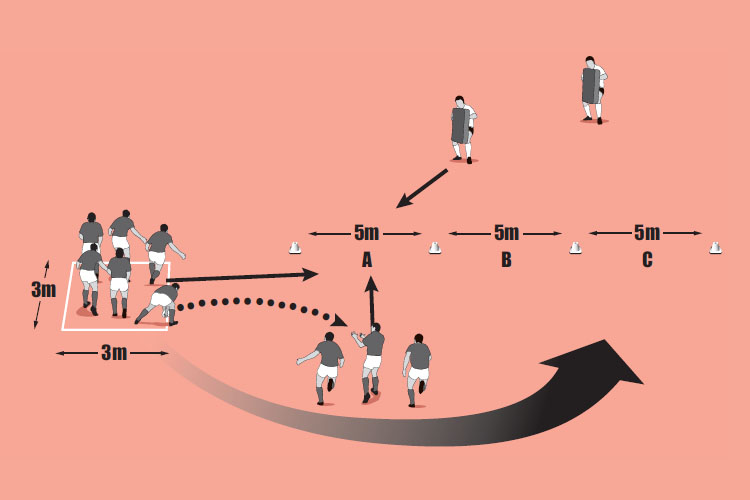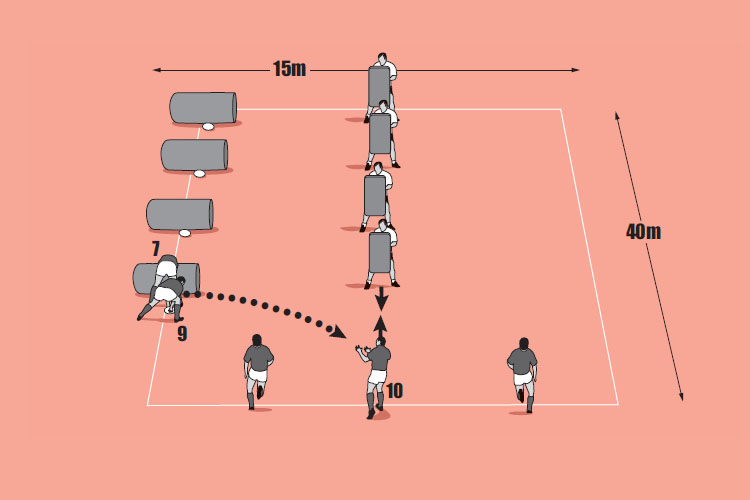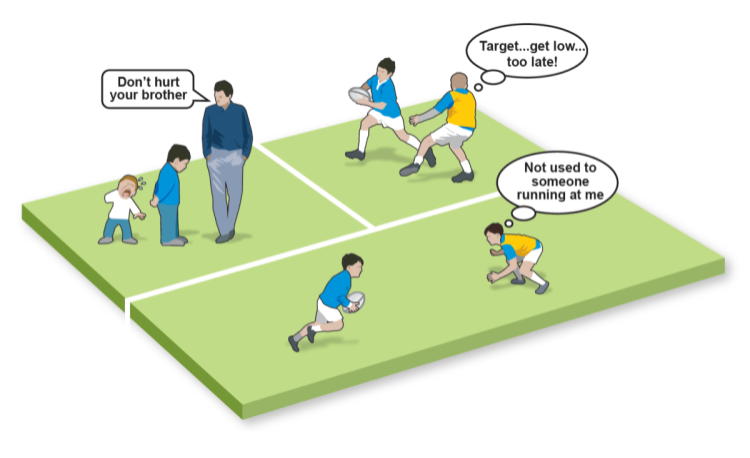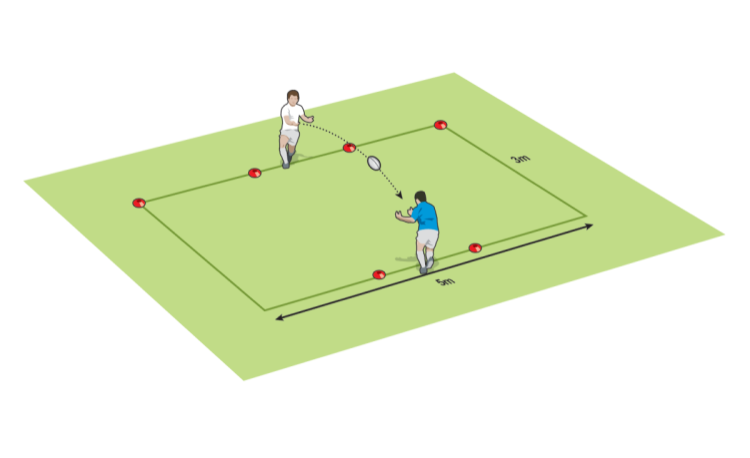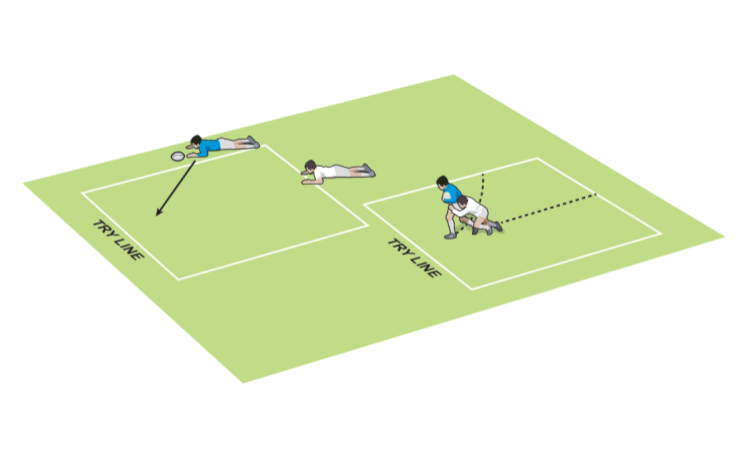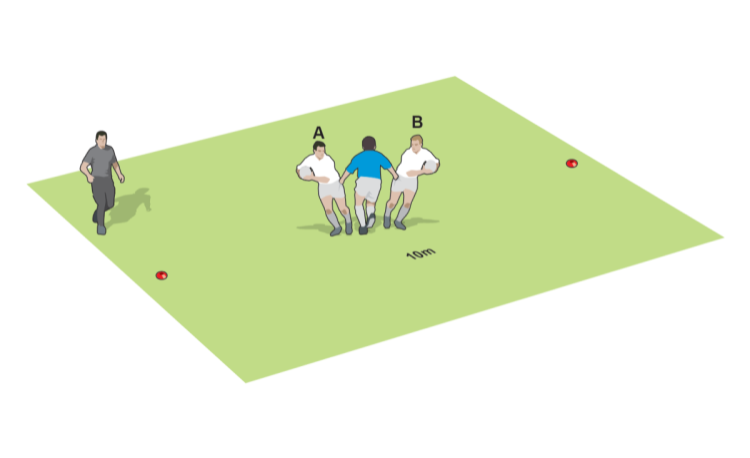You are viewing
1 of your 2 free articles
The weakest kink
Work on defensive line speed and communication with the “weakest kink”. Defenders have to adjust their running lines to make sure they are not exposed. Instead of “drilling” the defensive lines, defenders will have to work out the solutions for themselves. A good session as well for attackers to scan where the space is.
Warm up time: 5-7
Session time: 8-10
Development time: 10-15
Game time: 10-15
Warm down time: 5-8
What to think about
Prepare for a mess! Unless your players are highly tuned professionals, they will come up in every shape but a straight line, most of the time. With the stimulus of players in front of them, they will lose connection with their team mates next to them. This session will start the process of connection. Keep asking them what they could do to improve, such as communication, moving up as fast as the slowest player and “sliding” to fill the gaps. However, the chaos will challenge them – but it is very match-realistic.set-up
- Come up together as a line, with no gaps for attackers to squeeze through.
- Cut down the space for the attack, but only as a connected line.
What you get your players to do
Put four defenders facing away from four ball carriers. On your signal, the defenders run to the left or right cone in front of them before turning to close down two nominated ball carriers who are running forward to score without being two hand touched.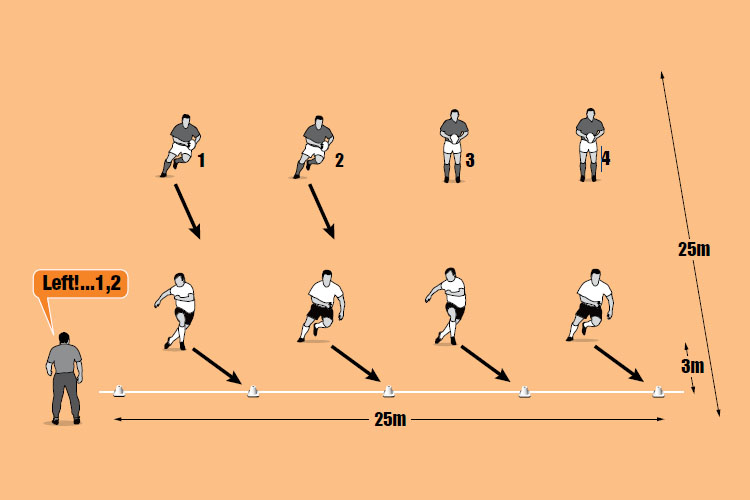
Development
Start one of the defenders facing up the field. He does not have to turn to defend (he has to make the choice whether to come forward or wait for his team mates). Start the defenders further away from the line of attackers. Widen the area and start the attackers further to either side (making the defenders have to slide across).Game situation
Set up four defenders in a ragged line (use cones to help (picture 3)). On your command, four attackers aim to score at the far end. Ideally use full tackling. No rucks or mauls allowed.
What to call out
- “Look ahead but be aware of where your team mates are”
- “Come up at the speed of the slowest player”
- “Don’t chase across the pitch, push out your team mates”
Newsletter Sign Up
Coaches Testimonials

Gerald Kearney, Downtown Las Vegas Soccer Club

Paul Butler, Florida, USA

Rick Shields, Springboro, USA

Tony Green, Pierrefonds Titans, Quebec, Canada
Subscribe Today
Be a more effective, more successful rugby coach
In a recent survey 89% of subscribers said Rugby Coach Weekly makes them more confident, 91% said Rugby Coach Weekly makes them a more effective coach and 93% said Rugby Coach Weekly makes them more inspired.
Get Weekly Inspiration
All the latest techniques and approaches
Rugby Coach Weekly offers proven and easy to use rugby drills, coaching sessions, practice plans, small-sided games, warm-ups, training tips and advice.
We've been at the cutting edge of rugby coaching since we launched in 2005, creating resources for the grassroots youth coach, following best practice from around the world and insights from the professional game.



